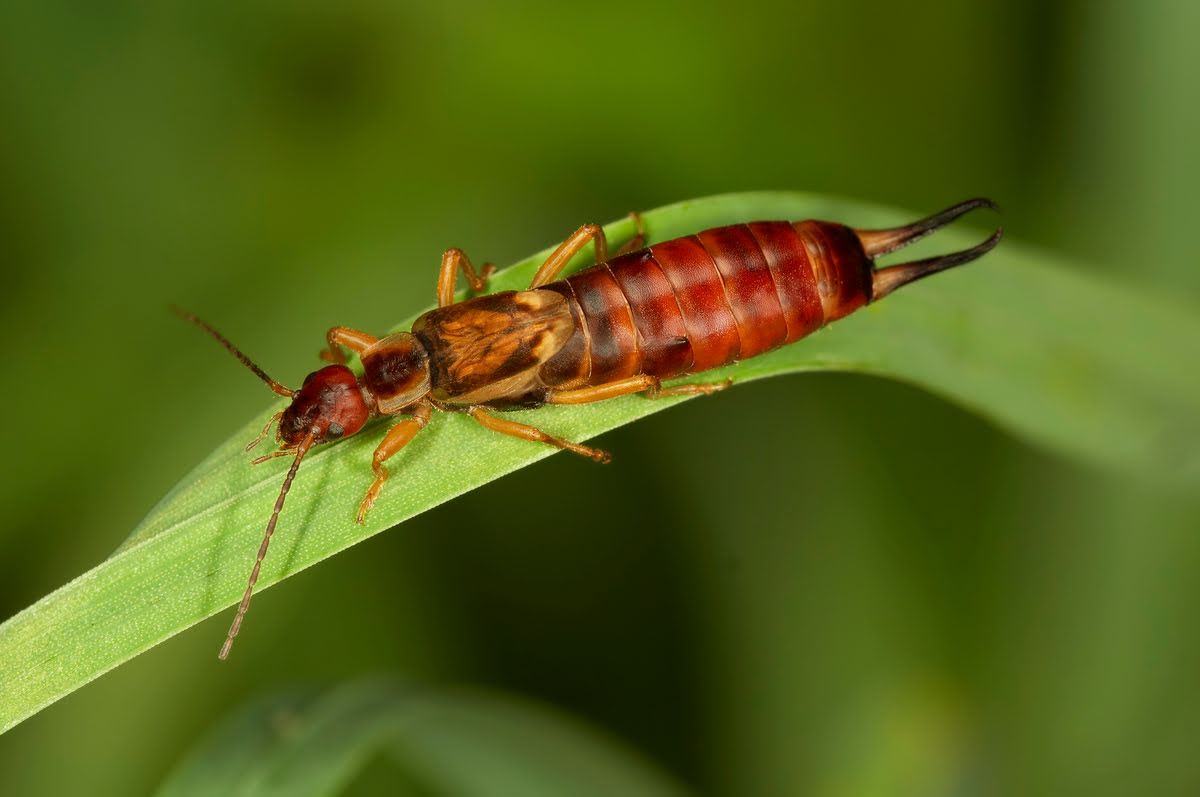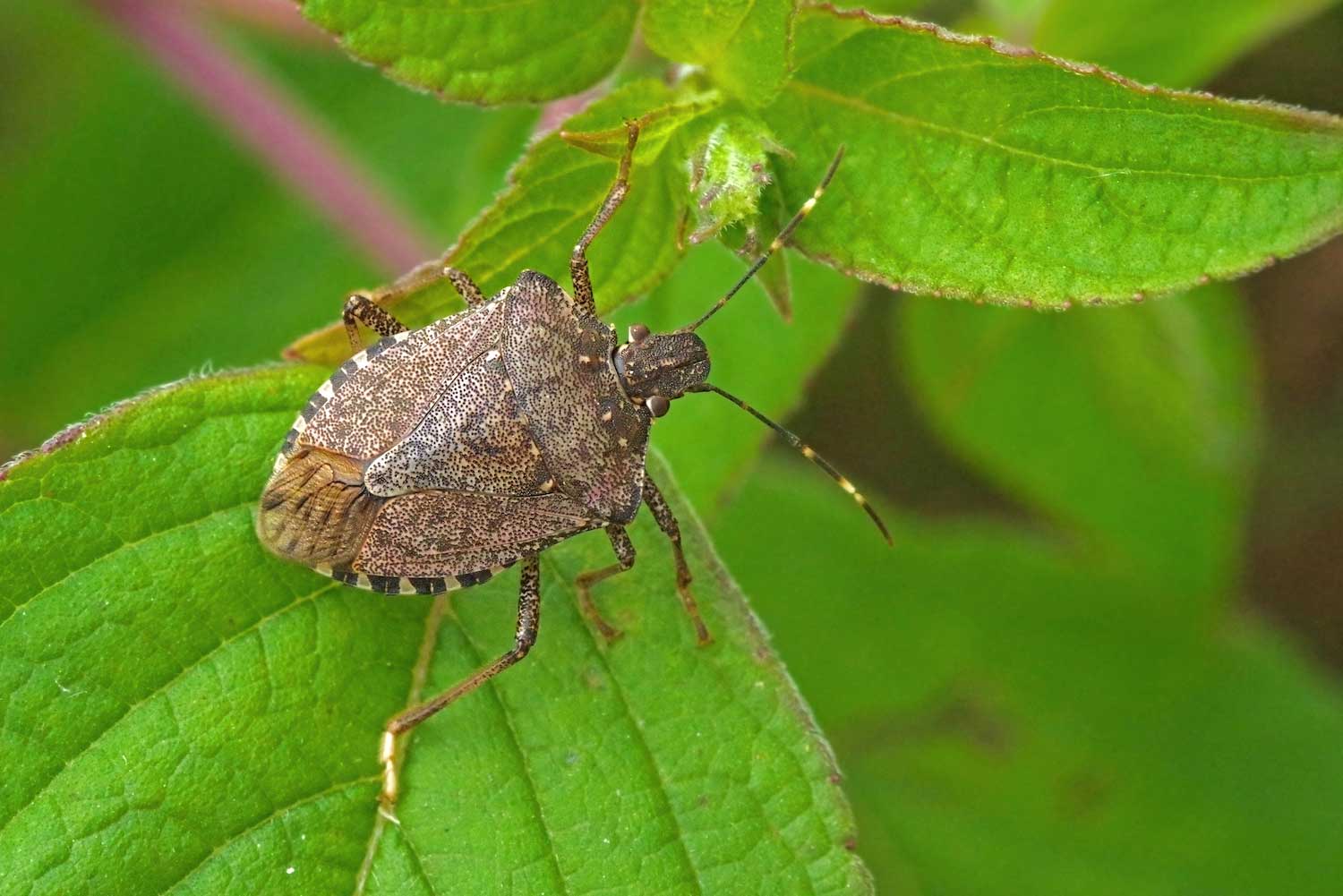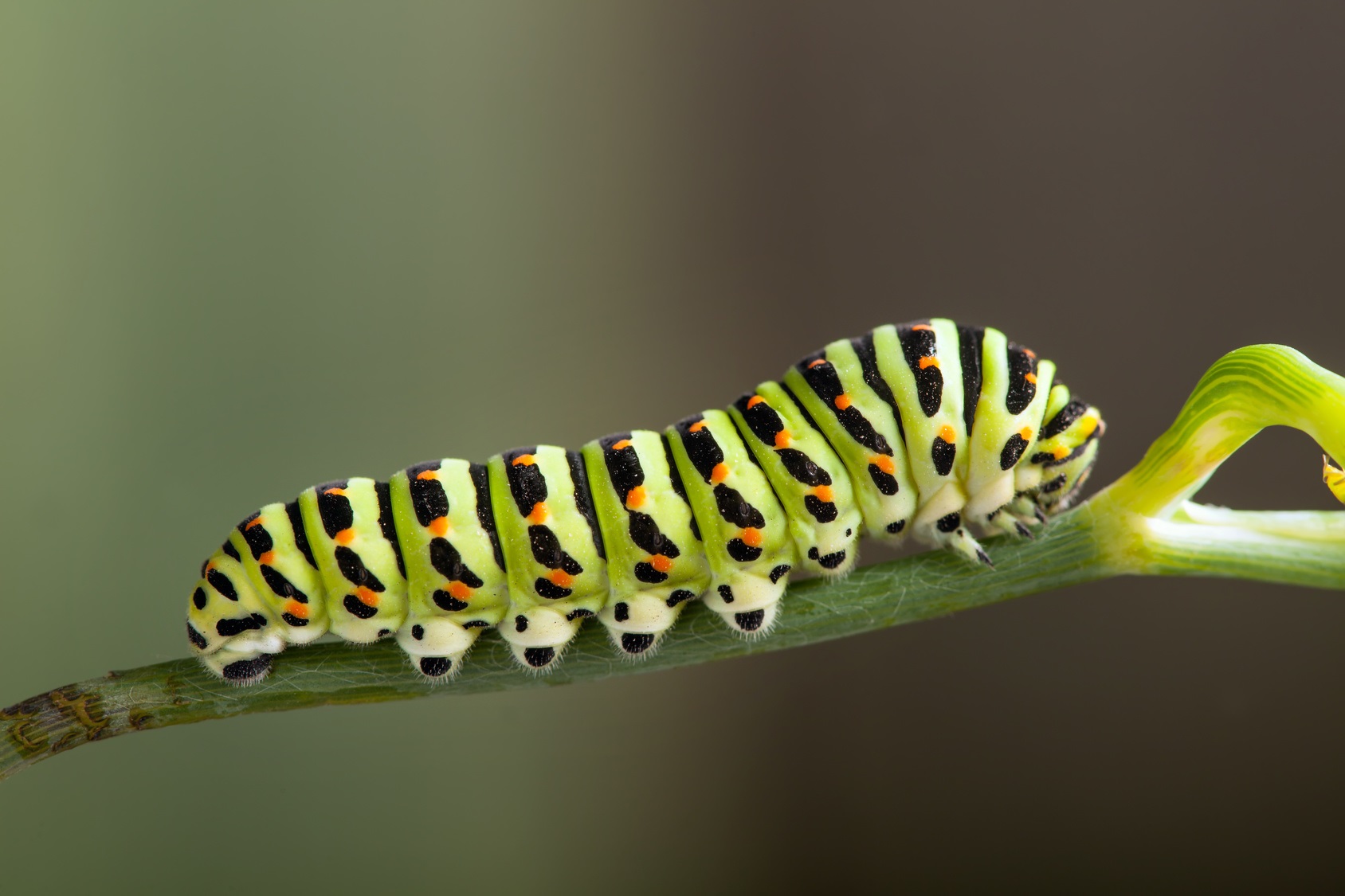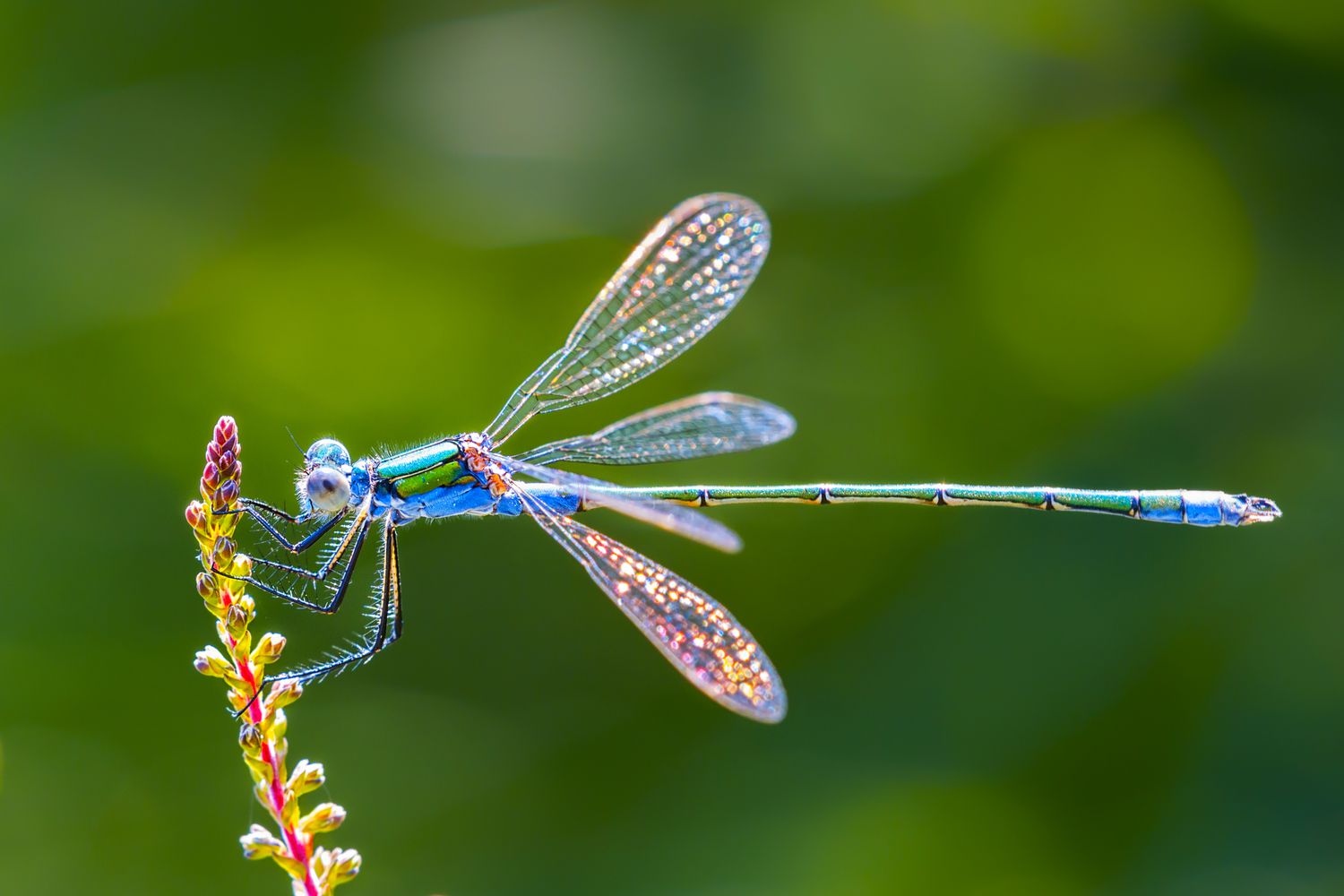Home>Gardening News and Trends>Latest News>What Are Silverfish Insects


Latest News
What Are Silverfish Insects
Published: December 11, 2023
Discover the latest news about silverfish insects and learn more about their habits and prevention methods. Stay updated with the most recent findings and insights in this informative article.
(Many of the links in this article redirect to a specific reviewed product. Your purchase of these products through affiliate links helps to generate commission for Chicagolandgardening.com, at no extra cost. Learn more)
Table of Contents
Introduction
Silverfish insects, scientifically known as Lepisma saccharina, are small wingless creatures that belong to the order Zygentoma. These fascinating insects have been on Earth for millions of years and are known for their unique appearance and behavior. Despite their name, they are not actually fish but are named so due to their sleek, silvery scales that cover their bodies.
Silverfish have a distinctive carrot-shaped body, with long antennae at the front and three long filaments protruding from the rear. They have a flattened appearance, and their bodies are covered in shiny silver scales, giving them a metallic sheen. These tiny creatures typically measure between ½ to 1 inch in length, making them quite inconspicuous.
Although not harmful to humans, silverfish can be a nuisance if they invade our homes. They are primarily nocturnal creatures and prefer dark, damp environments, making the bathroom, kitchen, and basement their favorite hiding spots. They are agile climbers and can quickly scurry across walls, ceilings, and even floors with their unique wiggling movement.
In this article, we will delve deeper into the appearance, habitat, diet, behavior, lifespan, and reproduction of silverfish. We will also discuss common concerns associated with these insects and provide effective prevention and control methods to keep them at bay. Understanding the nature of silverfish will help us better deal with their presence and take appropriate measures to protect our homes.
Appearance and Characteristics
Silverfish have a distinct and easily recognizable appearance. Their bodies are elongated and carrot-shaped, with a tapered abdomen and three long filaments at the rear. These filaments, known as cerci, provide a sensory function that helps the insect navigate its surroundings. Additionally, silverfish have two long antennae at the front of their bodies, which they use to detect scents and vibrations.
One of the most striking features of silverfish is their silvery coloration, which gives them their name. This is due to the presence of tiny scales that cover their bodies. These scales create a metallic sheen that reflects light, giving the insect a shimmering appearance. Although silverfish can vary slightly in color, ranging from silver-gray to brown, their scales always give them a distinctive gleam.
Another interesting characteristic of silverfish is their ability to move with great agility. They have a unique wiggling movement that allows them to navigate various surfaces, including walls, ceilings, and even smooth surfaces like glass. This movement, combined with their ability to squeeze into tight spaces due to their flattened bodies, allows them to easily access hidden areas within our homes.
In terms of size, silverfish typically measure between ½ to 1 inch in length. However, their slim and elongated bodies give the impression of a larger size. Despite their small stature, silverfish can move quite rapidly. They are remarkably fast runners and can scurry away in the blink of an eye when disturbed.
While their appearance may be off-putting to some, it’s important to note that silverfish are harmless to humans. They do not bite or sting and are not known to transmit any diseases. However, their presence in homes can be a sign of underlying dampness or moisture issues, which can be a concern.
Habitat and Distribution
Silverfish are well-adapted to thrive in a variety of environments, but they have a particular preference for dark, damp areas. They are commonly found in homes, especially in bathrooms, kitchens, basements, and attics. These areas provide the ideal conditions for silverfish to survive and reproduce.
One of the primary factors that attract silverfish to these spaces is the availability of moisture. They require a high humidity level to survive and thrive. Damp environments, such as bathrooms and basements, provide the perfect conditions for silverfish, as the humidity is often higher in these areas due to water sources like sinks, showers, and pipes. Additionally, kitchens can be appealing to silverfish due to the presence of food crumbs and spills.
While silverfish are common in residential areas, they can also be found in natural habitats such as forests, caves, and leaf litter. They are adaptable insects and can survive in a range of conditions. However, they typically prefer dark and secluded areas with access to food and moisture.
Silverfish have a worldwide distribution and can be found on every continent except Antarctica. They are known to exist in temperate and tropical regions, with varying populations in different parts of the world. They are more prevalent in areas with moderate climates and higher humidity levels. In colder regions, they may seek shelter indoors during the winter months to escape the harsh conditions outside.
It’s important to note that while silverfish are commonly found in homes, their presence doesn’t necessarily indicate poor hygiene. Even the cleanest households can experience a silverfish infestation, as these insects can easily make their way inside through cracks, crevices, or by hitching a ride on objects brought in from outside.
Diet and Behavior
Silverfish are nocturnal creatures, primarily active during the night. They are scavengers and have a varied diet, feeding on a wide range of organic matter. Their diet includes carbohydrates such as sugars, starches, and cellulose, which are found in common household items like paper, books, cardboard, clothing, and even wallpaper paste.
These resilient insects can survive for months without food, but they require a consistent source of moisture to sustain themselves. They are attracted to areas with high humidity and can even derive moisture from condensation on walls or leaks in plumbing. This is why they prefer to inhabit damp environments such as bathrooms and kitchens, where water sources are plentiful.
Despite their small size, silverfish are agile and can navigate various surfaces with ease. Their flattened bodies and numerous legs allow them to squeeze into narrow cracks and crevices, making it difficult to completely eradicate them once they have infested a space.
One interesting aspect of their behavior is their ability to molt throughout their lives. As silverfish grow, they shed their exoskeletons, allowing for further development. These discarded exoskeletons can sometimes be found near areas where silverfish congregate, serving as evidence of their presence.
Silverfish are known to exhibit a distinct movement pattern characterized by a wiggling motion. This peculiar motion is due to the way their legs and body segments move in tandem. Their agile nature enables them to quickly move across surfaces, using their antennae to explore and detect potential food sources.
When disturbed or threatened, silverfish can quickly dart away into cracks or other hiding places to avoid detection. They are known for their evasive behavior and can be quite elusive, making it challenging to catch or eliminate them.
It’s worth noting that while silverfish can be a nuisance in homes, they pose no direct harm to humans. However, their presence can cause damage to belongings such as book bindings, clothing, and papers. Additionally, their feeding habits and excrement can lead to unsightly stains or damage to household items.
Lifespan and Reproduction
Silverfish have a relatively long lifespan compared to other insects. On average, they can live for up to three years, although individual lifespans can vary based on environmental conditions and availability of food and water. This extended lifespan allows them ample time to reproduce and establish stable populations.
Reproduction in silverfish involves a unique process known as “mating by cerci.” During this process, the male silverfish releases a silk-like substance, or “spermatophore,” onto a surface. The female then detects and picks up this spermatophore using her genital opening, allowing fertilization to occur internally.
After fertilization, the females lay small, white oval-shaped eggs, usually in secluded areas or in cracks and crevices. These eggs are then left to hatch on their own. The incubation period can vary depending on environmental conditions, but it typically ranges from two weeks to two months.
Newly hatched silverfish, or nymphs, are whitish in color and gradually develop their characteristic silver scales as they mature. They go through a series of molts, shedding their exoskeletons as they grow. The number of molts can vary, but it usually ranges from 6 to 60, depending on environmental factors and availability of food.
As silverfish mature, they become sexually mature and can reproduce. The time it takes for a silverfish to reach sexual maturity depends on various factors, but it typically occurs within the first year of their life. Once mature, they can continue to reproduce throughout their remaining lifespan.
It’s important to note that silverfish populations can grow rapidly under favorable conditions due to their ability to reproduce continuously. This makes early detection and intervention crucial in preventing infestations from becoming widespread and difficult to manage.
Common Concerns
While silverfish do not pose any direct harm to humans, their presence in homes can be a cause for concern. Here are some common concerns associated with silverfish infestations:
- Damage to Belongings: Silverfish have a diet that includes materials commonly found in homes, such as paper, books, clothing, and wallpaper paste. Their feeding habits can lead to damage to these items, including holes or gnaw marks.
- Stains and Damage: Their excrement and shed exoskeletons can leave unsightly stains on surfaces and fabrics. Additionally, the presence of silverfish in pantries or storage areas can contaminate food products.
- Moisture Issues: Silverfish are often attracted to areas with high humidity. Their presence can be an indication of underlying moisture problems, which can lead to mold growth and other structural issues if not addressed.
- Psychological Discomfort: Some individuals may experience psychological distress or anxiety due to the presence of silverfish in their homes. The thought of insects crawling around can be unsettling, even if the insects themselves are harmless.
- Infestation Spread: If left unchecked, silverfish populations can grow rapidly and spread throughout a home. They can easily venture into different areas, making it difficult to completely eliminate them without professional intervention.
If you notice signs of a silverfish infestation, such as shredded paper, small holes in clothing, or silver-colored insects scurrying away when you turn on a light, it is important to take appropriate measures to address the issue and prevent further damage.
However, it is worth noting that not all silverfish sightings indicate an infestation. Occasional sightings of these insects may simply be a result of their natural presence in the environment. Monitoring the situation and taking preventive measures is key to keeping a silverfish population under control.
Prevention and Control Methods
Preventing and controlling silverfish infestations requires a combination of proactive measures and targeted interventions. Here are some effective methods to prevent and control silverfish in your home:
- Maintain Dry Conditions: Silverfish thrive in damp environments, so it’s important to address any moisture issues in your home. Repair leaks, improve ventilation, and use dehumidifiers in areas prone to high humidity, such as basements and bathrooms.
- Remove Food Sources: Silverfish are attracted to starchy and sugary substances. Keep food items in sealed containers and clean up food spills and crumbs promptly. Pay special attention to areas where these insects may find alternative food sources, such as stored boxes or papers.
- Declutter and Organize: Silverfish prefer dark, undisturbed areas. Reduce clutter and organize storage areas to minimize hiding spots. Regularly clean and vacuum areas where silverfish are likely to hide, such as closets, bookshelves, and behind appliances.
- Seal Entry Points: Silverfish can enter homes through small cracks and gaps. Seal potential entry points, such as gaps around doors, windows, and utility lines. Use weatherstripping or caulking to close any openings that may serve as entryways.
- Consider Natural Repellents: Some natural substances, such as cedar, lavender, and citrus peels, are believed to repel silverfish. Placing these natural repellents in areas where silverfish are likely to hide can discourage their presence.
- Use Desiccants or Insecticides: If necessary, you can employ desiccants or insecticides specifically formulated for silverfish control. These products can be applied to cracks, crevices, and other hiding spots. Follow the instructions carefully and consider hiring a pest control professional if the infestation is severe.
- Monitor and Take Swift Action: Regularly inspect your home for signs of silverfish activity, such as shed skins, excrement, or damage to belongings. Taking prompt action at the first signs of an infestation can help prevent it from becoming widespread and more difficult to eliminate.
It’s important to remember that complete eradication of silverfish is challenging, especially if the infestation is severe or the underlying conditions in your home are conducive to their survival. Seeking professional pest control services may be necessary for effective and long-lasting control, particularly in persistent or widespread infestations.
By implementing preventive measures and utilizing targeted control methods, you can reduce the risks of silverfish infestations and maintain a pest-free home environment.
Conclusion
Silverfish are fascinating insects that have adapted to thrive in a variety of environments. While their presence in homes may cause concerns about potential damage to belongings, it’s important to remember that they do not pose any direct harm to humans. Understanding their appearance, behavior, and reproductive habits can help us manage and control their populations effectively.
To prevent silverfish infestations, it is essential to address underlying moisture issues and eliminate their food sources. Maintaining a dry and clean environment, sealing entry points, and regular monitoring can significantly reduce the risk of silverfish taking up residence in our homes.
If a silverfish infestation does occur, swift action is important to prevent it from becoming widespread. Utilizing natural repellents, desiccants, or targeted insecticides can aid in controlling their population. However, in severe or persistent infestations, it may be necessary to seek professional pest control services to effectively eliminate the problem.
By taking proactive measures and implementing appropriate control methods, we can minimize the risks posed by silverfish while maintaining a comfortable and pest-free home environment. Regular maintenance, monitoring, and timely intervention are the keys to successfully managing silverfish populations and preventing further damage to our belongings.
Remember, while silverfish may be a common nuisance in homes, they are part of the natural world and have been coexisting with humans for centuries. By understanding their behavior and implementing preventive measures, we can ensure a harmonious living environment and preserve the integrity of our homes.










